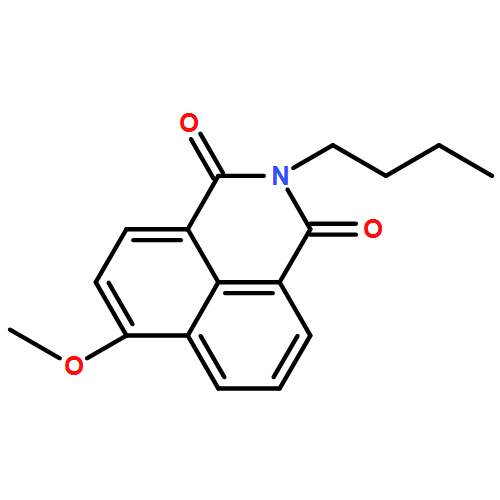Co-reporter: Xiaofeng Wu, Lihong Li, Wen Shi, Qiuyu Gong, Xiaohua Li, and Huimin Ma
pp: 1440
Publication Date(Web):December 10, 2015
DOI: 10.1021/acs.analchem.5b04303
Monoamine oxidase A (MAO-A) is known to widely exist in most cell lines in the body, and its dysfunction (unusually high or low levels of MAO-A) is thought to be responsible for several psychiatric and neurological disorders. Thus, a sensitive and selective method for evaluating the relative MAO-A levels in different live cells is urgently needed to better understand the function of MAO-A, but to our knowledge such a method is still lacking. Herein, we rationally design two new ratiometric fluorescence probes (1 and 2) that can sensitively and selectively detect MAO-A. The probes are constructed by incorporating a recognition group of propylamine into the fluorescent skeleton of 1,8-naphthalimide, and the detection mechanism is based on amine oxidation and β-elimination to release the fluorophore (4-hydroxy-N-butyl-1,8-naphthalimide), which is verified by HPLC analysis. Reaction of the probes with MAO-A produces a remarkable fluorescence change from blue to green, and the ratio of fluorescence intensity at 550 and 454 nm is directly proportional to the concentration of MAO-A in the ranges of 0.5–1.5 and 0.5–2.5 μg/mL with detection limits of 1.1 and 10 ng/mL (k = 3) for probes 1 and 2, respectively. Surprisingly, these probes show strong fluorescence responses to MAO-A but almost none to MAO-B (one of two isoforms of MAO), indicating superior ability to distinguish MAO-A from MAO-B. The high specificity of the probes for MAO-A over MAO-B is further supported by different inhibitor experiments. Moreover, probe 1 displays higher sensitivity than probe 2 and is thus investigated to image the relative MAO-A levels in different live cells, such as HeLa and NIH-3T3 cells. It is found that the concentration of endogenous MAO-A in HeLa cells is approximately 1.8 times higher than that in NIH-3T3 cells, which is validated by the result from an ELISA kit. Additionally, the proposed probes may find more uses in the specific detection of MAO-A between the two isoforms of MAO, thereby promoting our understanding of the behavior and function of MAO-A in living biosystems.
